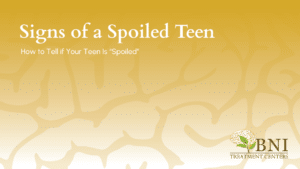The Dangers of Cinnamon Challenge
The Dangers of Ahh, the perennial allure of the dare. Kids and teens have always been known to lay down the gauntlet with a dare, or even a double-dog dare, as part and parcel of the childhood experience. This silly practice of taunting another to go through with some daring exploit has seldom led to a serious health risk for this age group, until the advent of social media, that is.
Today’s kids and teens are wired to a bevy of social media platforms that provide the perfect vehicle to flaunt themselves or the person being dared in order to share the experience online. There is no shortage of these ridiculous videos of adolescents undergoing some thrilling dare on YouTube, the platform most often used for the purpose of documenting the escapades.
Unfortunately, the dares being attempted are increasingly dangerous. Beyond just being stupid or gross, some of the kids are performing dares or challenges that even be deadly. This recent movement toward gaining notoriety for doing dumb stunts for attention and glory can be traced back to the early 2000s MTV show called (appropriately) “Jackass.” That show featured tasteless skits and increasingly dangerous stunts that often ended in injury. Over the years, the concept evolved to utilize social media videos instead of cable television.
What is the Cinnamon Challenge?
One of the more popular teen dares that has been shown to be potentially dangerous is called the Cinnamon Challenge. The cinnamon challenge is one that first appeared on YouTube in 2007 and has stuck around ever since. In this prank, the teen is prompted to attempt to consume a teaspoon full of ground cinnamon in 60 seconds without resorting to drinking any water to assist the process.
To date literally thousands of videos posted on YouTube depicting young teens engaging in the challenge. In fact, in doing a search for “cinnamon challenge” on YouTube, one receives 1,390,000 results. Various versions or challenge levels of the cinnamon challenge are posted there for public consumption, some of them garnering millions of views.
Why is the Cinnamon Challenge Dangerous?
Cinnamon is the byproduct of tree bark, ground into a powder form a popular spice used in a variety of recipes over the centuries. Because cinnamon contains cellulose fibers that do not easily break down, the daredevils can find that it sticks on the way down, causing choking, irritation of the throat, coughing, and potentially a collapsed lung. In the lungs, cinnamon can cause thickening of the lung tissue and lead to permanent scarring.
Emergency room visits are common for those who take the cinnamon challenge. During the first three months of 2012, the American Association of Poison Control Centers racked up a 240% increase in calls due to the hazards caused by the cinnamon challenge over the entire year in 2011. The cinnamon challenge can activate an asthma attack or even lead to pneumonia.
What Prompts Kids to Participate in Risky Behaviors?
Parents might be wondering what would make some teens more prone to attempting these dangerous pranks than others. What causes teens to be risk-takers in general? The answer lies in the development of the adolescent brain:
- The area of the brain responsible for executive functions, such as evaluating risk, regulating impulse control, and decision-making, is not yet fully developed in teens.
- The teen’s right prefrontal cortex is also not fully developed, making teens more susceptible to peer disapproval or judgment. This area of the brain can regulate feelings of distress upon experiencing negative peer evaluation or exclusion.
- The lateral prefrontal cortex of the brain is also under construction during the teen years. Young adolescents are more likely to engage in risky behaviors when paired with peers versus adults when paired with peers.
How to Treat Teens Who Engage in Risk-Taking Behaviors
When teens begin to exhibit risky behaviors, parents should begin to monitor their interactions with friends and their online activities more closely. Clear boundaries and rules regarding acceptable computer activities and social activities that are articulated early in adolescence and consistently enforced can help limit risk-taking behaviors.
However, when it becomes evident that the teen has serious impulse control issues that are culminating in activities that pose a risk to their health or the well-being of others, it is time for more targeted professional intervention. In the more serious cases, a residential program designed for teens can provide the clinical support and tools that will help the teen establish self-regulating behaviors going forward.
Other Dangerous Dares and Challenges
As with most things involving adolescents, trends can shift quickly. Kids continue to seek more high-risk stunts to participate in and flaunt online. This has led to a proliferation of dares and challenges that pose serious dangers to their health, including:
- The Tide Pod Challenge. Adolescents are challenging each other to bite into and chew a Tide detergent pod to see how long before they will be forced to spit it out.
- The Deodorant Challenge. Using aerosol deodorant, kids are holding the nozzle close to the skin and spraying the product for as long as possible, leaving spots and burn marks on arms and legs.
- The Salt and Ice Challenge. Teens place salt on the skin of their arm and then hold an ice cube over it for a few minutes, causing a burn that can lead to permanent nerve damage and scarring.
- The Condom Snorting Challenge. Yes, you read that right. Teens are snorting unused condoms through their noses with the object being to pull it out through the mouth.
- The Hot Pepper Challenge. Adolescents challenge each other to chew and swallow a highly spicy cayenne, Thai, or Habanero pepper causing intense heat or a burning sensation and profuse sweating.
- The Pass-Out Challenge. Extremely dangerous challenge where teens dare each other to faint by either hyperventilating for 20 seconds while another applies pressure to the chest, or using a belt or rope to cut off oxygen flow leading to loss of consciousness.
Obviously, parents have their work cut out for them to be on top of their teen’s online activities, and to be aware of the physical signs that their child might be participating in these challenges.
BNI Treatment Centers Offer Mental Health Treatment for Teens
BNI Treatment Centers is a residential treatment program designed for teens ages 12-17 in need of mental health services, including dual diagnosis and substance use disorders. BNI Treatment is a psychiatrist-owned and operated program located in Southern California that integrates traditional therapies with experiential therapies for a successful approach to addressing the unique needs of this demographic. For more information about the program, or for questions about a teen that needs help with impulse control, contact BNI Treatment today at [phone_number].



